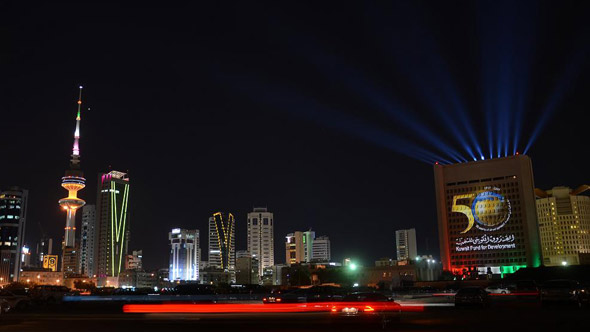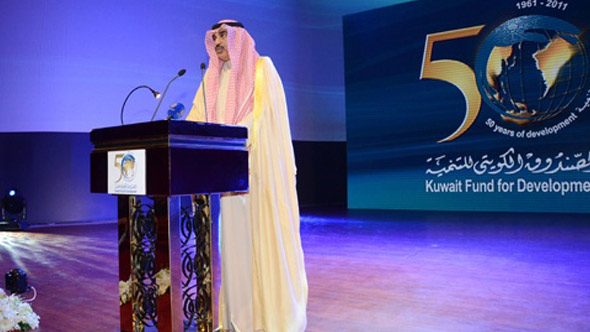Kuwait: Helping Developing Countries in Development
The Kuwait Fund for Arab Economic Development, known as the Kuwait Fund, celebrated recently its 50th anniversary. But according to its General Director Abdulwahab Al-Bader, the Fund’s journey in helping the most in need is far from over.

Kuwait Fund for Arab Economic Development: Development for good. The Kuwait Fund for Arab Economic Development, known as the Kuwait Fund, celebrated recently its 50th anniversary. But according to its General Director Abdulwahab Al-Bader, the Fund’s journey in helping the most in need is far from over.
Within 50 years, the
Kuwait fund
has built a legacy of
718 loans
supporting the health and sustainable development worth 4.4 billion KD (15 billion US$).
Founded in 1961, shortly after Kuwait gained independence from the United Kingdom, the Kuwait Fund was set up to support other Arab countries in their development efforts. In mid 1974, the Fund’s operations were expanded to include other developing countries as well.
The Fund’s homepage states that “the object of the Fund is to assist Arab and other developing countries in developing their economies”. The Fund’s track record has benchmark character. Within 50 years, the Kuwait fund has built a legacy of 718 loans supporting the health and sustainable development worth 4.4 billion KD (15 billion US$).
According to the Fund’s 49th annual report, the Fund’s total revenue for the fiscal year 2010/2011 amounted to about KD 136.581 million (491.31million U.S. Dollars), compared to a net profit of KD. 305.7 million (1.1 billion U.S. Dollars) for the previous year.
According the fund’s 49th annual report,the Fund’s total revenues for the fiscal year 2010/2011 amounted to about KD136.581 million (491.31 U. S. dollars) , resulting mainly from income on investments held for trading. By including expenses and other charges, net profit amounted to about KD 117.4 million (422.31 million U. S. dollars), compared to a net profit of KD 305.7 million (1.099 billion U. S. dollars) for the previous year. 
Despite enormous difficulties encountered during the events of the Iraqi invasion and occupation of Kuwait in 1990/1991, yet the Fund continued supporting the implementation of development operations. Years later, the food and financial crisis impacted the economies of the Arab and other developing countries, nevertheless, Al-Bader says that the Fund was able to cope with these challenges and sustain its operations at planned levels.
Connecting Africa to the grid
“Today there are a number of projects we support in Sudan, Morocco, Egypt”, General DirectorAbdulwahab Al Bader told Macropolis in an exclusive interview. “Lately, in Sudan, we have a dam project, the Marwai Dam, which has been in the works for a long time and has doubled the electricity production in Sudan”.
Due to Kuwait’s proximity to Africa, the Fund supports many projects in the continent. “We are engaged in many African countries,” said GD Al-Bader, “especially in the south and in the west, but also in the east – in Senegal, Ghana, Guinea, Kenya and Ethiopia, for instance”.
The annual report also reveals the long-term nature of the Fund’s strategy. A KD 11 million loan granted to a university project in Nouakchott, Mauritania, has a period of 28 years.
The bulk of the Fund’s support goes to the Arab world. Arab countries account for 54% of the Fund’s engagement, with 20% to Southeast Asia and Pacific countries, while 17% goes to African countries. Is this ration changing, with the rise of Asia?
“It depends,” Al-Bader answered. “We have increased our overall commitment, or at least are trying to, at the moment; at the same time, we are maintaining the 50% average distribution to Arab countries”. But the General Director warns that “It can be very misleading to look at the percentage by itself”.
When capital is not needed
All in all, the Kuwait Fund works together with 104 countries around the world. One might guess, that the government of Kuwait is “feeding” the Fund with capital, whenever there is a shortage. The truth is that the Kuwait Fund has not received any financial support from the government for more than 20 years, meaning the Fund depends mainly on loan repayments and portfolio investments in carrying out its activities.
All in all, the
Kuwait Fund
works together with 104 countries around the world. One might guess, that the government of Kuwait is “feeding” the Fund with capital, whenever there is a shortage.
Al-Bader: “Over the years, we have maintained an independent position of the financial situation, fairly from our good use of our cash position and our good investments, whether in the local market or in the international market. At the same time most of our current income i.e. 80% comes from portfolio investments, and only 20% from loans.
The Fund has no plans to set limits. “We can never stop”, GD Al-Bader explained. “Development will always keep happening. We expect to do much more in the coming years, and that is why we have already obtained an approval for the increasing of our work as well as our commitments”.
The Fund and the Arab Spring
Looking ahead, “Demand is coming from everywhere. Arab countries, such as Egypt, Lebanon and Morocco, but also Asia and Africa in an increasing manner,” Al-Bader explained.
“I have to be positive about what is happening in the Arab world. Changes are underway and they will take time, a situation which is only natural, but we hope that the outcome will meet people’s aspirations for progress, peace and development”, he concludes.
“Honestly, in my opinion, the biggest challenge that we have is of social nature; socio-economic, more precisely, or human resources. We have to take on all those challenges together and try to find the most suitable way of solving those problems. Still I hope and think that it will be for the best”.